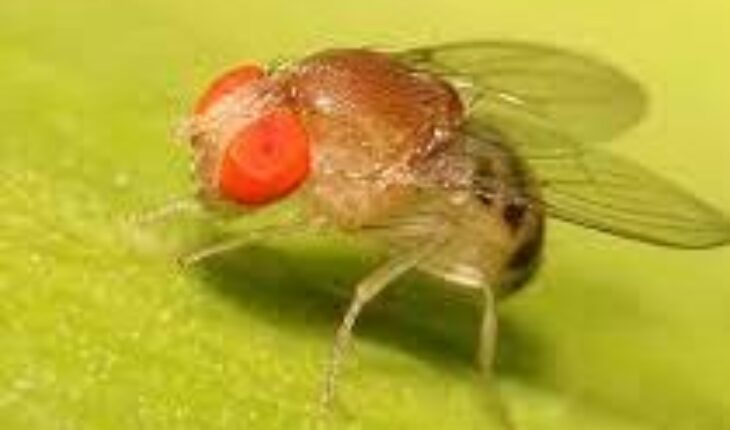Autism spectrum disorder (ASD) or autism is a neuro-genetic disorder related to brain development. The diagnosis of ASD is based on behavioral tests, which complicates its diagnosis during pregnancy or at birth.
According to the WHO, about one in 100 children has autism, with a bias of four boys to one girl. In Chile, according to the Clinical Practice Guideline, Detection and Timely Diagnosis of Autism Spectrum Disorders (ASD) of the Ministry of Health (MINSAL) of 2011, there is no registry of the diagnosis of ASD in the country.
ASD is quite heterogeneous between people and its traits can coexist with other neurological conditions, such as attention deficit hyperactivity disorder (>50%), intellectual deficit (>40%), anxiety or sleep problems and atypical sensory processing and integration (>90%). Many genetic studies in people with ASD allowed to isolate hundreds of risk genes relevant to monogenic (inheritance of a trait that is influenced by a single gene) and oligo-genic (inheritance a trait that is influenced by few genes) forms of the disorder. However, a major challenge is determining how mutations in a particular neurodevelopmental gene trigger ASD-specific behavioral traits.
Therefore, a group of researchers led by John Ewer and Angelina Palacios of the Interdisciplinary Center for Neurosciences of the University of Valparaíso (CINV) used the vinegar fly or Drosophila to study the role of the TRPY gene, homologue of the human gene TRPC6 (or transient receptor potential 6 channel for its name in English) in the appearance of ASD.
The TRPC6 gene
Drosophila is a very powerful genetic model in scientific research because its entire genome is known and was famously used to study genes related to the circadian rhythm, research that won the Nobel Prize in Physiology and Medicine in 2017. In addition, drosophila has served as an important system for studying consequences of genes related to cognitive and psychiatric disorders including several genes associated with ASD.
The TRPC6 gene contains the information to build a voltage-independent calcium channel (allows calcium to enter the cell without the cell being activated by an electrical signal). An alteration of the gene was identified in a person with ASD. However, the knowledge about the function of TRPC6 in the human brain is very limited and the consequences on its neuronal function by interrupting the gene were only studied in stem cells derived from human neuronal cells.
This is why the UV researchers wanted to delve into the role of this gene and took advantage of certain very stereotyped behaviors of the vinegar fly, such as courtship behavior, the ability to generate learning and memory, circadian rhythm, locomotor activity and sleep homeostasis. to analyze the consequences of an alteration of the TRPY gene in the functioning of the brain, in a living animal model.
The study
First, the researchers used courtship as a social behavior to analyze flies that were induced a mutation in the TRPY gene and see if the male pays attention to the female and adjusts his behavior depending on her responses to his advances. During courtship, the male first orients himself towards the female (seeks her out), then touches her with your front paw and follows her while producing a “courtship song” by vibrating one of his wings. Depending on the receptivity of the female and the commitment of the male, the pair executes the additional steps of the fixed courtship sequence, culminating in copulation. If the female is not receptive or the male is not fully engaged, any step of the sequence can be extended or the sequence can be completely aborted if the female rejects the male.
The researchers observed that mutant males for the gene under study began courtship behavior and finished it much faster than control males. In addition, they had fewer attempts at copulation. But this reduced latency (the observed time interval between mating and the beginning of courtship behavior) did not affect the female’s attractiveness. When the mutants were fed hyperforin (a drug that initiates a physiological response similar to the protein produced from the TRPC6 gene)Days before the trial, mutant males had similar latency to control males in courtship behavior.
On the other hand, control males (without mutations) took longer to initiate courtship when paired with mutant females for the TRPY gene. In addition, not all males executed all stages of courtship such as the “courtship song” for example. Courtship similar to that of the controls was observed when the female was fed hyperforin for four days prior to the trial.
These results suggest that the TRPY gene is involved in regulating courtship impulse in males. Thus, mutant males express a greater urgency to copulate, while, in females, the gene regulates attractiveness in courtship.
Hyperactivity
Second, the researchers focused on hyperactivity and behavior similar to human anxiety, but in mutant flies. It is known that 50% of people with ASD have hyperactivity disorders or attention deficit or anxiety. To measure these behaviors, the researchers looked at the flies’ locomotor activity, as well as the flies’ preference to be in the center (more anxiety) versus at the edges (less anxiety) of a space called “sand.”
The scientists found that the male and female flies mutant to the TRPY gene were overactive. This hyperactivity was reflected in the increase in the total distance traveled within the arena compared to the control flies. Additionally, these flies stayed longer in the central area of the arena than the controls, but spent the same time at the edges as in the center of the sand. However, locomotor activity similar to that of the controls was observed when the mutant flies were fed hyperforin for four days prior to the trial.
These results suggest that the TRPY gene is related to locomotor activity and its mutation causes hyperactivity in flies, but does not produce anxiety-like behavior.
The CINV researchers then investigated whether the absence of the TRPY gene affected learning and memory in the mutant flies. This is because it has been observed that people with ASD may have important differences in these traits with respect to the neurotypical population. Thus, in order to evaluate these processes, scientists focused their attention on courtship behavior. This essay is based on the fact that a mated female rejects the male’s advances and eventually the male stops courting her. This results in the male learning and then reducing his subsequent courtship to any other female. This behavior can be used to measure the short- and long-term memory of male flies.
Using this assay, the scientists discovered that mutant males for the TRPY gene showed low levels of learning, evidenced by the fact that they continued to follow females who rejected them. In addition, they showed low memory levels by not learning from previous rejection, when paired again with other females compared to control males. However, when the mutant males were fed hyperforin for four days before the trial, they regained their learning levels, but not long-term memory.
Finally, the researchers looked at sleep and sleep homeostasis in the mutant flies. It has been observed that people with ASD may have sleep disorders and as an additional fact, the person in whom the disruption of a copy of the TRPC6 gene was observed was diagnosed with sleep problems. The scientists measured the sleep duration of the mutant flies for 24 hours and found that the mutant males, but not the females, had a shorter sleep duration, with higher frequencies of very short episodes of sleep. Next, the researchers measured sleep homeostasis. To do this trial, they deprived the flies of sleep the night before the trial using mechanical stimulation of two seconds every ten seconds for twelve hours at night. They then measured sleep duration and frequency parameters. They found that mutant males regained less lost sleep than control males. In mutant females, there was only a reduction in recovery from lost sleep compared to control females. However, when the mutant males and females were fed hyperforin before the trial, they were able to regain normal sleep. These sleep problems seen in the mutant flies were not related to the circadian rhythm, as the mutants had a circadian rhythm similar to the cycle.or circadian controls.
In conclusion, the team of researchers led by John Ewer and Angelina Palacios showed that mutant flies for the TPRY gene expressed behavioral traits similar to those of people with ASD, including those of the patient with the disruption of the TRPC6 gene, such as difficulties in social interactions, hyperactivity, alterations in learning, memory and sleep homeostasis. All these traits were rescued in flies that had the mutation by introducing the TRPY gene or feeding them the drug hyperforin. This could indicate that the features seen in mutant flies are caused by the lack of the TRPY gene. In addition, they showed that drosophila is a good model for studying ASD-related genes and can be a facilitator for analyzing correlations between the different traits seen in people with ASD and the genes they have.
Apart from the scientific context provided by this study, we can become aware of the percentage of people with ASD currently in the world. It is important to understand only the difficulties they may have to live in a norm-typical society, but the contributions they can bring to that society itself. That is, it is important to have a commitment to a real inclusion of people with ASD in everyday life, in the work and societal environment.
Source: https://www.nature.com/articles/s41380-022-01555-1
Further reading: Clinical Practice Guideline, Detection and Timely Diagnosis of Autism Spectrum Disorders (ASD) of the Ministry of Health (MINSAL) 2011: https://www.minsal.cl/portal/url/item/bd81e3a09ab6c3cee040010164012ac2.pdf
*This article arises from the agreement with the Interdisciplinary Center of Neuroscience of the University of Valparaíso.
Follow us on





